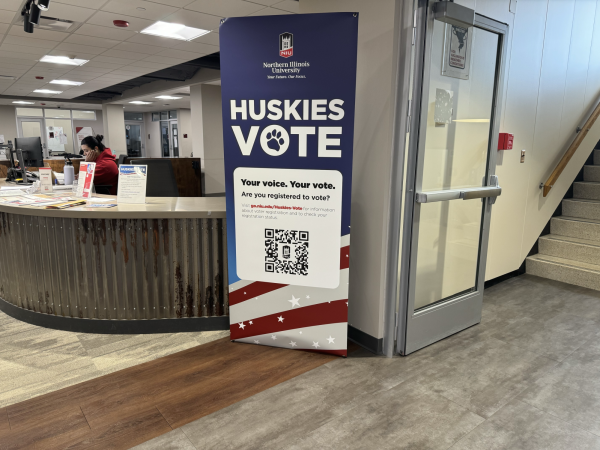Construction moves station to new location
October 21, 1993
The NIU Weather Service has moved its weather station.
As of Oct. 2, precipitation and wind data now are being taken from the new weather station near the TV-8 studio west of Annie Glidden Road.
The weather station previously was located east of Anderson Hall, on the northeast side of NIU. When construction of the new engineering building started this year, administrators cited a problem with the station being in the way, according to Associate Meteorology Professor Allen Staver. The construction also would skew the weather data, Staver added.
Staver cited concerns about the possible effect of location on the weather data. The new station is in a forested area, Staver said, whereas the old station was located in an open field. This would have the effect of underestimating wind velocity at the new station, he said.
Staver said moving the location away from downtown may reduce temperature measurements by at least one or two degrees. Staver said he was unsure of the most likely effect on precipitation data.
“Whenever you move the station, you should continue to take observations at the old station for at least a year and compare them to the data at the new station,” Staver said.
The new location for the station likely will be less affected by urban heating.
Urban heating is a hot issue among meteorologists. Kathy Chmel, meteorologist for the National Weather Service at Romeoville, said the urban heat island effect is caused by sunlight being absorbed by concrete and asphalt, then being radiated back into the air around the urban center.
“The trend still continues in the form of edge cities, like the O’Hare-Schaumburg corridor. Atlanta also is a classic example of cities that have formed urban nuclei around their airports,” said Richard Greene, assistant professor of Urban Studies.
“There is strong debate among climatologists regarding the effect of urbanization around airport weather stations, and whether the apparent global warming could be related to weather data tainted by urban heating,” Greene said.
He said several meteorology professors and climatologists have noticed a correlation between trends in temperature and the urban development near weather stations.
In the 1930s and 1940s stations moved from the roofs of downtown buildings to fields near suburban airports. Since then there has been considerable urban build-up near the airports of most U.S. cities, Greene said.
Thus, some climatologists think urban heating might be mistaken as global warming by those who take regional averages of temperature observations.
In fact, Staver said he would expect an ice age to be a more likely scenario for future climate than a runaway greenhouse effect. Staver cited long-term climate cycles which show the planet to be almost ready for an ice age, which at best could be only temporarily delayed by greenhouse warming, if it even exists.
“From what I have read and the data I have analyzed, my opinion is that temperatures are getting cooler in the U.S.,” Staver said.
“From what I have read and the data I have analyzed, my opinion is that temperatures are getting cooler in the U.S.”












